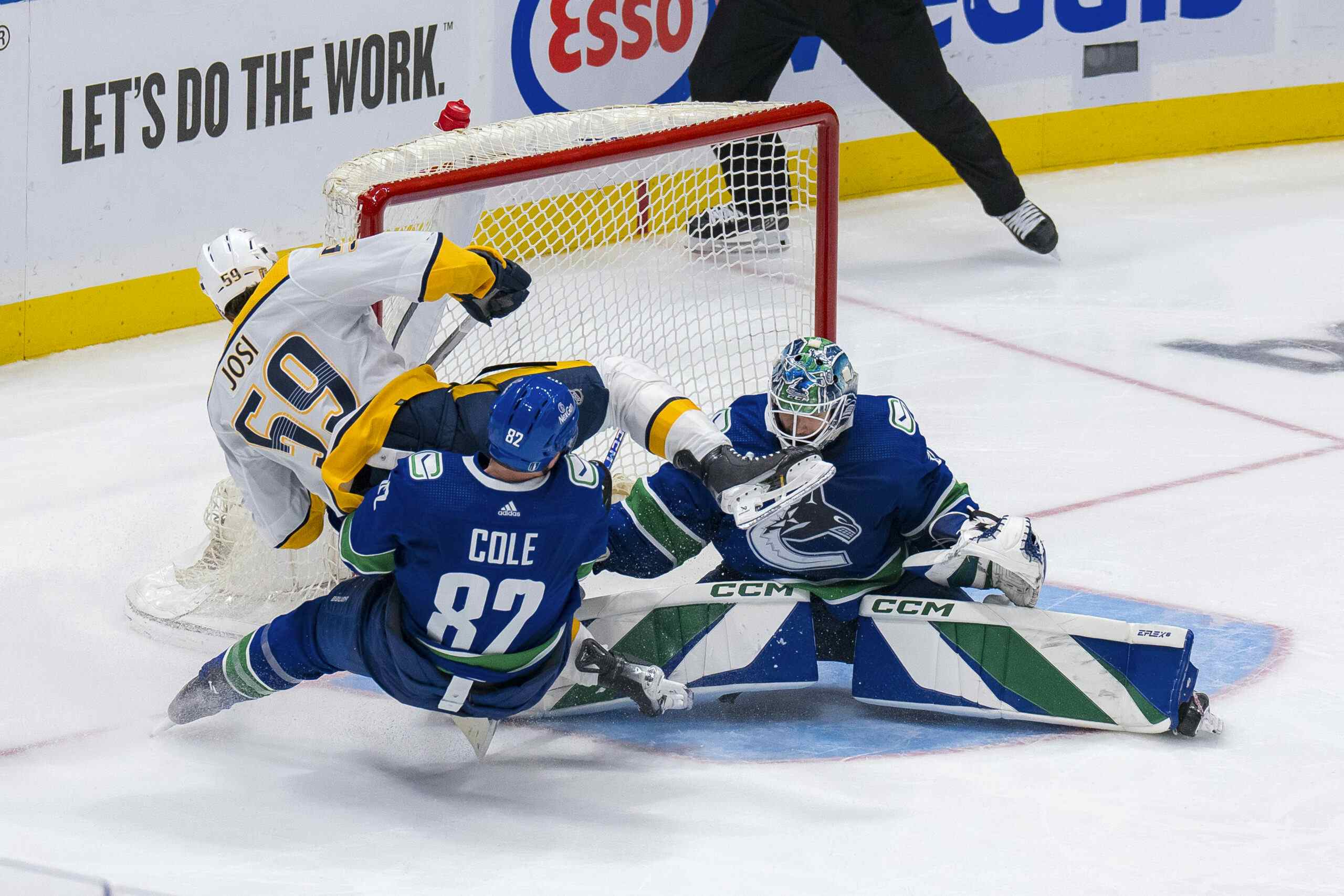CA Prospect Profiles: #3 Nicklas Jensen

Being from a country with only 25 rinks, it’s pretty amazing that Jannik Hansen has had the success that he has had. For Nick Jensen to be a potential first-line superstar? That’s off-the-charts crazy. And yet, here we are.
Jensen, the son of a Canadian who played 16 seasons in the Danish league, burst onto the OHL scene two years ago. His high-octane scoring talent really shouldn’t have been a surprise, though. The season before arriving in Oshawa, Jensen played in the Danish senior league, scoring a two goals in his debut. At age 16. Against men.
Yup, the kid’s always been able to score.
Like any young player, making the NHL and sticking will come down to his work ethic and his willingness to get the job done.
In Oshawa last year he was a leader in all modes of the game, be it power play, even strength or penalty kill. Roger Hunt, one of the Generals’ assistant coaches, spoke with Canucks Army about Jensen’s two years in the OHL.
“He played both sides of the game for us, the power play is a slam dunk but he killed penalties and became a strong guy for us there,” he said. “A lot of our offensive success came through him. He loves scoring and that is his thing, but he will become a complete player.”
Moving straight to the OHL was about making the NHL as fast as possible, Hunt feels. And coming into the league as 16-year-old, he hadn’t been very heavily scouted.
"He burst on to the scene his first year, no one knew him," Hunt said. "He was a bit more advanced than people maybe gave him credit for."
Jensen was the key cog to the Generals’ power play, running their 1-3-1 system last year from the half-boards. It was the kind of role that the young Dane apparently relishes.
"He wants to be a go-to guy, he wants stuff to funnel through him. He shoots from everywhere," Hunt said. "We wish we had him back this season, but him going to Sweden, he’s going to be playing with men, that’s going to be a big adjustment. He’s a strong kid, he doesn’t mind going to traffic, I don’t think his strength will be a problem."
Hunt sees Jensen’s ice time likely going down – at least to start, something that will take getting used to. Hunt pointed out that although Jensen’s numbers during his two seasons were very similar, the lack of growth in the numbers is really a sign of how much extra work the winger was trying to put in on the ice.
"He had very similar numbers both years, maybe he put some pressure on himself to build but he had a stop-start season, also playing world juniors, [and in] Chicago," he said.
That was the the third year in a row Jensen played at the world tournament.
This coming season will be the second year in a row that Jensen will skate with professionals. After Oshawa was eliminated from the OHL playoffs last spring, he was assigned to the Chicago Wolves, where he continued to score, bagging a hat trick in the final game of the regular season. He also scored two goals in two playoff games. It was this success that surely spurred his thinking towards leaving junior and finding a way to play against more experience players, be it in the NHL or elsewhere.
As Canucks Assistant GM Lorne Henning told the Province in July:
“He’s played with men since he was 16 in Denmark and he played well in the AHL when he went there,” said Henning. “Unfortunately, he can’t go back there (to the AHL), so I think this is the next best thing for him, where he’s playing against men. Obviously, he’s got high-end talent, but he’s got a few things to work on. As far as we’re concerned it’s a pretty good step for him."
Jensen’s ascent to the top level of prospectdom is a rather remarkable achievement, if you ask longtime Danish hockey observer – and Canucks fan – Anders Elkjaer Johansen.
"We have so few rinks," he said. "Only about 25 rinks or so – and only 10 cities with rinks. Hockey is a big sport in a few places around the country – but in the rest of the country it doesn’t register at all and only Herning and Rødovre have the setup to produce elite players – i.e. better than Danish league level – consistently."
Of course, if you do the math, you realize that Denmark is doing a remarkable job of producing prospects.
"We only have about 5000 registered players," he said. "We’re actually producing NHL players at an impressive rate."
Jensen isn’t the only Danish player developing abroad. Current Canuck Jannik Hansen, of course, was one of the first to come to North America, though he did so after being drafted, not before, like Jensen did. It a move Danish players make because the national league is a mix of semi- and full professionals. The league’s quality is good, though not as good as it was before the recession. There’s just not as much money in Danish hockey as there once was.
Most Danish prospects end up in Sweden as a result.
"The German league pays a lot more than the Danish league, but they aren’t any better at developing players, so for juniors Germany isn’t really an option," Johansen explains. And Jensen’s Canadian passport made the move to Ontario a very easy one.
This season, moving to a professional environment will be even more demanding on Jensen’s development.
"To make it to the next level you have to focus on your play both ways. I’m naturally more of an offensive player… But that’s what I’m trying to do, just get better defensively," Jensen told Thomas Drance in March. Playing in Sweden, on the big ice, will definitely ask a lot of questions of his play away from the puck. (Thom also reported on Jensen in October.)
Jensen will begin playing exhibition games this weekend, but if Canucks training camp does begin as scheduled, Jensen will be there, his agent told the Vancouver Sun on Tuesday morning.
Other Prospect Profiles in this Series:
Recent articles from Patrick Johnston





